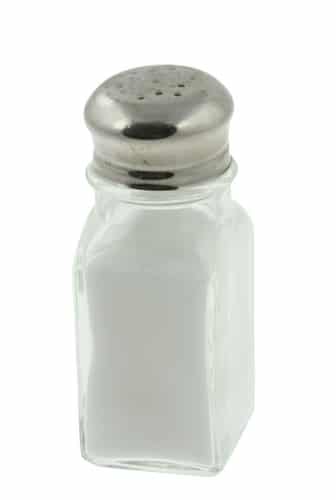
Foods That Are Unexpectedly High in Sodium
According to the CDC, a major source of dietary salt is bread, rolls, and buns. This isn’t because these foods are so much saltier than other foods – it’s just that people eat more of them. The average slice of wheat bread has about 135 milligrams of salt per serving while a piece of pita bread has more than double that amount. The amount of sodium in bread ranges from a low of 80 milligrams to more than 200 milligrams. If you eat a couple of sandwiches a day, the sodium can really add up. Most people don’t think of bread and rolls as being inherently salty foods.
According to dietary guidelines, the average person should get no more than 2,300 milligrams of sodium a day, an amount that’s equivalent to a single teaspoon of salt. People who have heart disease or high blood pressure should limit sodium to no more than 1,500 milligrams a day since sodium raises high blood pressure in people who are salt sensitive.
Other Surprising Sources of Sodium
Other foods that made the top ten list of sodium-rich foods include pizza, poultry, processed meats, pasta, chicken, soups, fast food sandwiches, and cheese. Where did potato chips and pretzels end up? At the very bottom of the list. Still, potato chips and pretzels are a respectable source of sodium at between 100 and 200 milligrams of sodium per serving, it’s just that people eat less of these foods than they do foods like bread and rolls.
Packaged foods can be deceptively high in sodium. That’s why it’s important to read labels. A can of soup has as much as 940 milligrams of sodium, while a slice of processed sandwich meat may have more than 1,000 milligrams. A few cups of canned soup and you’ve already gone over your daily sodium requirements. In general, protein foods contain more natural sodium than do fruits and vegetables. Plus, fruits and vegetables are a good source of potassium, which helps to offset some of the negative effects of sodium.
To make matters worse, when you buy fresh chicken breasts at the supermarket, they may have been injected with a mixture of salt and water to make them more tender and tasty. This salt and water mixture can give a single chicken breast a sodium content of over 400 milligrams. So much for natural chicken breasts.
Always Check the Sodium Content of Packaged Foods
If you buy packaged foods, always check the sodium content before dropping it in your grocery cart. Unexpected foods that are high in sodium include salad dressings, energy bars, cereals, cottage cheese, and gravy mixes. Buy fresh or frozen fruits and vegetables to avoid the salt in canned veggies and fruits.
If you eat at restaurants or fast food places, it’s even more difficult to control sodium since they don’t list nutritional information on menus, and they usually serve large portions that have been heavily seasoned. One way to avoid problems is to stay away from soups and appetizers and ask the chef to prepare your entrée without salt. For side dishes, stick to salad.
The Bottom Line?
You can’t always judge whether a food is high in sodium by tasting it. Lower your sodium intake by eating more fresh fruits and vegetables, reading labels and by limiting the number of times you eat out at restaurants.
References:
Centers for Disease Control. “Where’s the sodium? There’s too much in many common foods.”
Related Articles By Cathe:
How Does Sea Salt Differ from Table Salt?
Does a High-Sodium Diet Increase the Risk of Heart Disease?
Why High Sodium Diets Are Bad for Your Bones
6 Common Causes of Water Weight Gain

